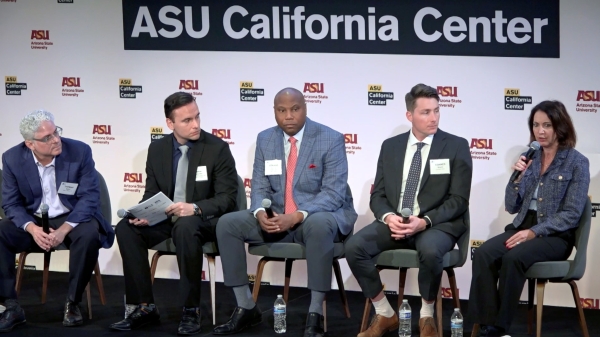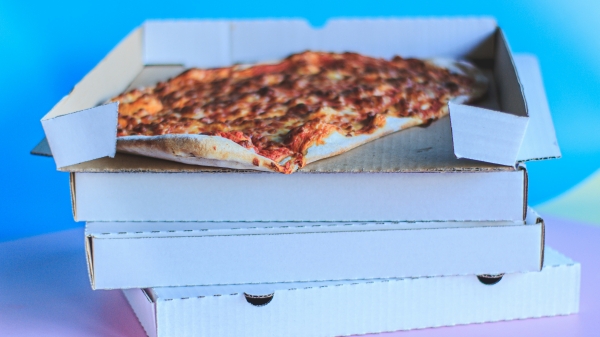ASU survey finds majority favor creating independent agency to examine police shootings

A majority of state residents polled by Arizona State University are in favor of establishing an independent agency to investigate law-enforcement shootings.
The survey, conducted last fall by the Morrison Institute for Public Policy, a nonpartisan research unit at ASU, found that 57% of the roughly 1,400 Arizonans surveyed agreed or strongly agreed that an independent statewide agency should be created to investigate shootings by police officers.
Minority-group respondents felt even more strongly: 68% of Black respondents and 64% of Hispanic respondents favor an independent investigative agency for police shootings. The survey results were presented at a webinar Thursday by the Morrison Institute.
The results are significant because a bill has been proposed to create such an agency. House Bill 2650, proposed by Rep. Rusty Bowers, a Republican who is speaker of the state House of Representatives, calls for $24 million to establish a “critical incident bureau” to investigate any discharge of a firearm by a police officer.
Ojmarrh Mitchell, an associate professor in the School of Criminology and Criminal Justice at ASU, said that in the U.S., the typical model when there is a police shooting is that fellow officers investigate the incident.
Some jurisdictions, in Georgia for example, have an independent agency to examine shooting events.
“What’s interesting is that there’s a growing shift toward implementing these types of independent agencies,” Mitchell said in the webinar. “Several states — I think there are about seven currently — have moved to this model, by law and policy.”
The ASU survey found racial differences in preferences for the makeup of an oversight agency. On a ranked list of five options, 57% of general-population respondents said they would have the most confidence in a task force made up of investigators from several police departments, while 53% preferred a statewide agency created specifically to investigate shootings by police. Black and Hispanic respondents had a slightly stronger preference for a statewide agency instead of a task force – 50% and 52%, respectively.
The survey also found:
- Trusting police: Only 31% of African American respondents agreed or strongly agreed that they trust the police, compared with 48% of Hispanic respondents and 60% of the general population.
- Confidence in police investigations: Only 36% of respondents – and 23% of African Americans – have confidence in having the officer’s own police department do an investigation of a shooting.
- Accountability: When asked to rank investigation outcomes, an overwhelming majority of the respondents, 87%, prioritized a thorough investigation, as well as having the officers involved in the shooting held accountable if the shooting was not justified – 82%.
- Funding: A majority of overall respondents support using state revenue to create an independent state agency to investigate shootings – 51%, compared with 59% of Black and 54% of Hispanic respondents.
- Body-worn cameras: A huge majority of respondents – 86% — said that the inclusion of body-worn camera footage makes them more confident about an investigation. Black respondents were less confident – 78%.
However, Black respondents were more likely to believe that release of body-worn camera footage is important or very important after a shooting — 77%, compared with 60% of the general population. A higher percentage of general population respondents, 65%, believed that the police department’s own account of the shooting was important or very important.
Mitchell noted that Black respondents were more interested in seeing body-worn camera footage than hearing the police department account.
“I interpret that as, perhaps because there’s a lack of trust, rather than looking to see what the police said about the shooting they want to look with their own eyes and make their own independent assessment,” he said.
The researchers oversampled African American and Hispanic residents, according to Allison Cook-Davis, associate director for research at the Morrison Institute.
“We were interested in getting specific demographics, like African American and Hispanic population views, and we had to go out of our way to speak to more people in those populations in order to accurately capture those views,” she said.
The survey did not ask respondents’ political affiliation.
“We feel that, given our role in the state and being nonpartisan, it’s important that we’re trying to capture and reflect the views of all residents of Arizona, so I point out that this is not just a poll of registered voters,” said Andrea Whitsett, director of the Morrison Institute.
Top photo by iStock
More Law, journalism and politics

Exhibit uses rare memorabilia to illustrate evolution of US presidential campaigns
After one of the most contentious elections in history, a new museum exhibit offers a historical perspective on the centuries-old American process.“We The People! Electing the American President” had…

TechTainment conference explores the crossroads of law, technology, entertainment
What protections do writers, actors, producers and others have from AI? Will changing laws around name, image and likeness (NIL) eliminate less lucrative college sports programs?And what does…

How to watch an election
Every election night, adrenaline pumps through newsrooms across the country as journalists take the pulse of democracy. We gathered three veteran reporters — each of them faculty at the Walter…